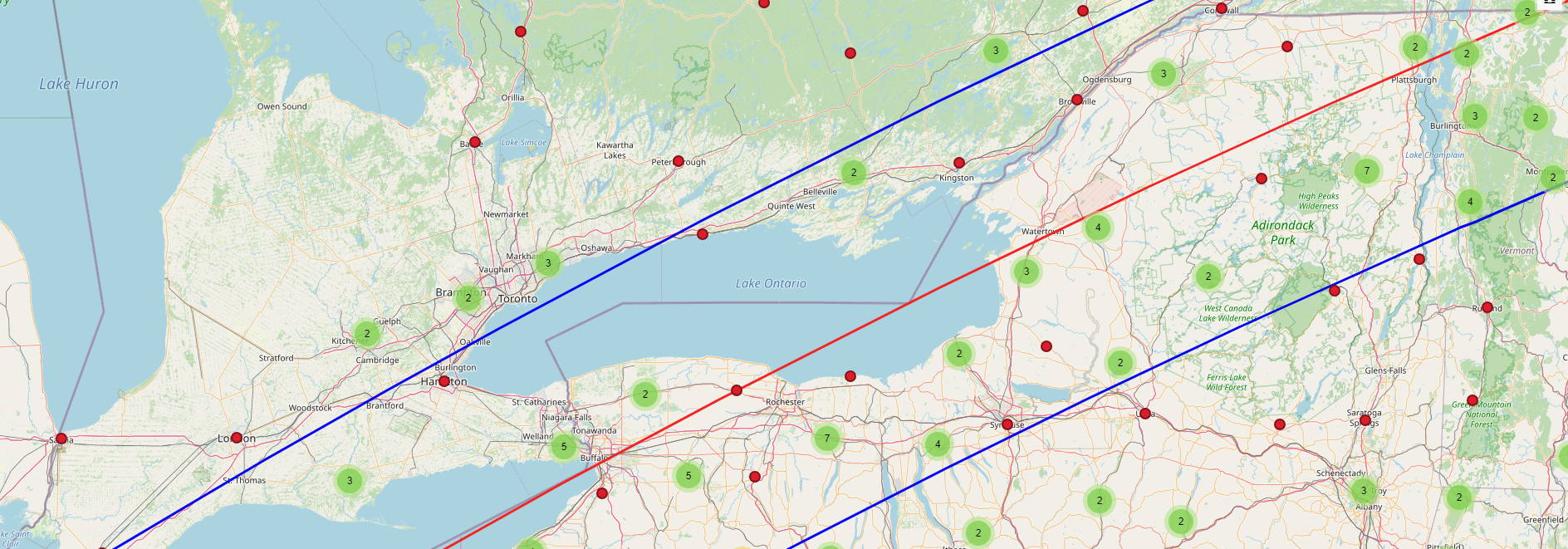What is the Solar Eclipse?
On Monday, April 8th, 2024, Hastings County will experience its first total solar eclipse in 400 years. The Moon will pass between the Sun and Earth, casting a shadow on our region. For parts of the County, complete darkness will occur under the path of totality.
The County encourages residents to take a few moments to view this rare phenomenon safely on April 8, 2024 however it is essential that everyone takes the proper precautions to protect our eyes and personal well-being. This webpage is designed to provide information to help you and your family enjoy this celestial event while minimizing risks and ensuring a healthy experience for everyone.
In the following image, areas within the blue lines will experience the total solar eclipse. Click here to view the path of the eclipse in your region.
Impacts to the Area
During the solar eclipse, you can expect several notable changes in your surroundings:
- A gradual dimming of natural light as the moon partially obscures the sun.
- A temporary drop in temperature as the Sun's heat is partially blocked by the Moon's shadow.
- Potential increase in visitors from outside of Hastings County.
- Potential changes in wildlife behaviour, such as birds roosting or animals becoming more active due to the sudden darkness.
An unforgettable experience of witnessing the Sun's corona—a glowing halo of plasma—during the brief period of totality for those within the path of totality.
Eclipse Timing in Hastings County (Within Path of Totality)
Location | Partial Eclipse | Full Totality | Totality Duration |
| Belleville (City Centre) | 2:08 PM | 3:22 PM | 2m 2s |
| Tyendinaga | 2:08 PM | 3:22 PM | 1m 36s |
| Trenton | 2:07 PM | 3:21 PM | 2m 1s |
| Deseronto | 2:08 PM | 3:23 PM | 2m 28s |
Solar Eclipse Safety Tips
How to Use Eclipse Glasses or Viewers

Step 1
Turn away from the sky and find your shadow. With your back facing the sun, place your eclipse glasses or viewer over your eyes. You should not be able to see anything through the filter(s), so be careful of your surroundings!

Step 2
With your eyewear in position, turn back toward the sky and look around for the (now much fainter) Sun. If you can’t seem to find it, don't remove your eye protection to look! Ask someone for help.

Step 3
During full totality, it is safe to temporarily remove your eclipse glasses/viewer, but you must put your lenses back on before totality is over. When in doubt, always keep your lenses on.


